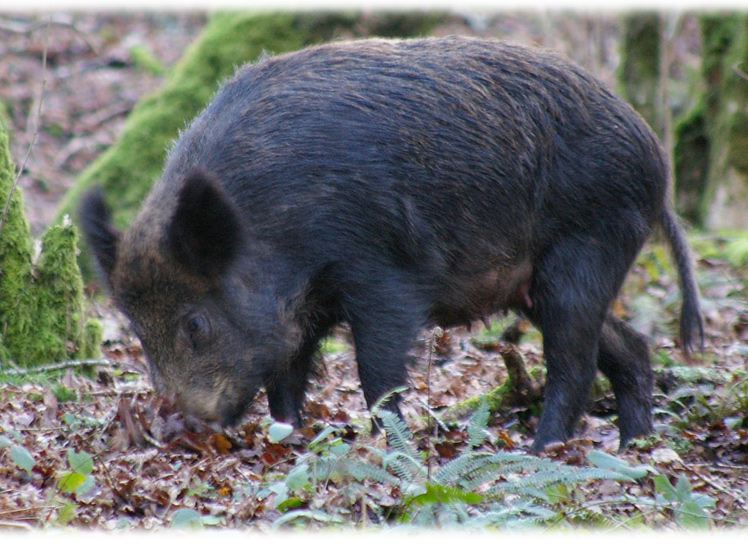
Adult Sow, rooting
Current status
Confirmed free living and breeding feral pig are currently reported in Dumfries & Galloway, Lochaber and Inverness-shire See map 1
Description and behaviour
Adult feral pig stand up to one metre at the shoulder. Adult males may exceed 150kgs in weight, adult females being usually half that weight.
The summer coat of a typical feral pig is bristly and dark with a ridge of long hair down the back, becoming darker brown or black in winter with thick under fur. The tail is straight, not curled. Both sexes have tusks, the lower tusks are very sharp and in males may exceed 20 cm in length. Piglets are red brown to ochre coloured with yellowish longitudinal stripes for the first 4 to 5 months.
As a number of types of breed of pigs have been released into Scotland, colour variation, ranging from red to pink and black spots can be encountered.
Females and young live in groups, usually led by the oldest sow. Fully-grown males tend to be solitary, except during the breeding season. Young males often form groups during the summer after being pushed out by females prior to farrowing (‘nest like structure to give birth in).When undisturbed, feral pig can become used to the presence of humans but usually they are elusive and largely nocturnal, so people are often unaware of their presence.
Feral pig react very quickly to food availability, changing their feeding areas frequently. They often cause damage to grain and root crops, and to grassland when rooting in search of invertebrates and small mammals.
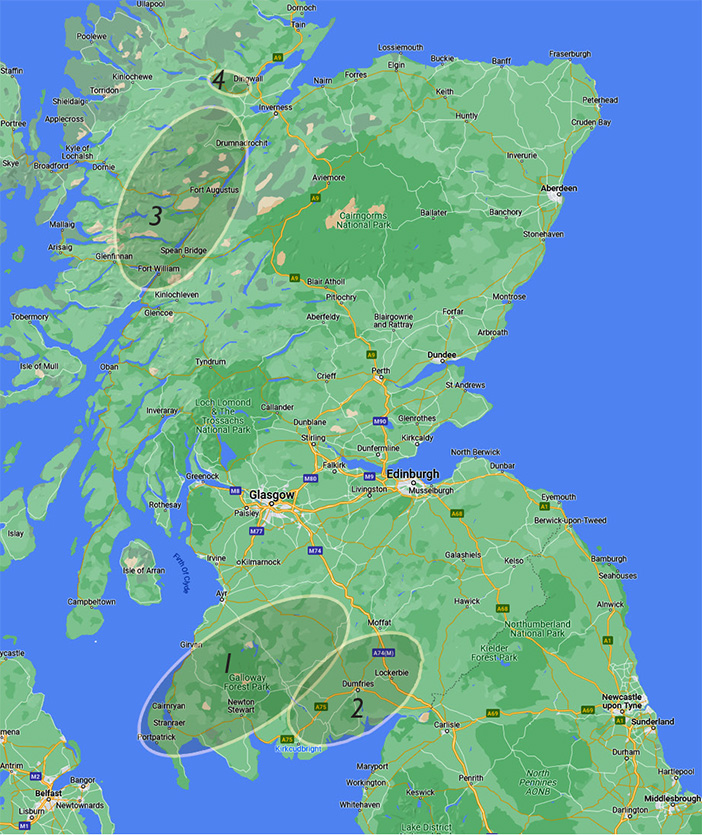
Map 1. Indicative distribution of wild boar in ... based on data compiled for Defra and ...Wildlife Management and Licensing Service
.
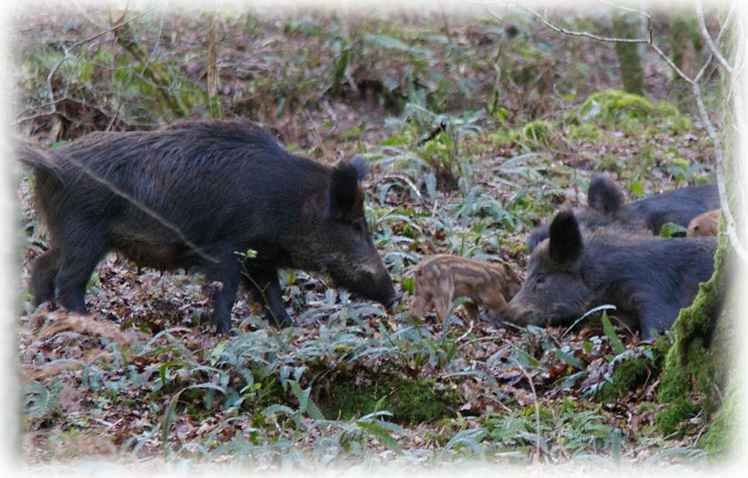
Sow with piglets and juveniles
Signs
You are recommended not to search for feral pig but signs that you may come across are:
seeing the pigs themselves
- seeing the pigs themselves
- evidence of rooting behaviour on pastures or in woodlands
- rubbed or scraped trees
- dung
- hoof marks, often with two clear dew claw imprints behind the main hoof prints
- wallows with associated pig hoof prints
- scrapes or hollows made when resting
- pig hair caught in fences or damaged fences (feral pig hair has characteristic whitish split ends and can be easily distinguished from those of deer and other wildlife)
- farrowing nests (see Breeding)
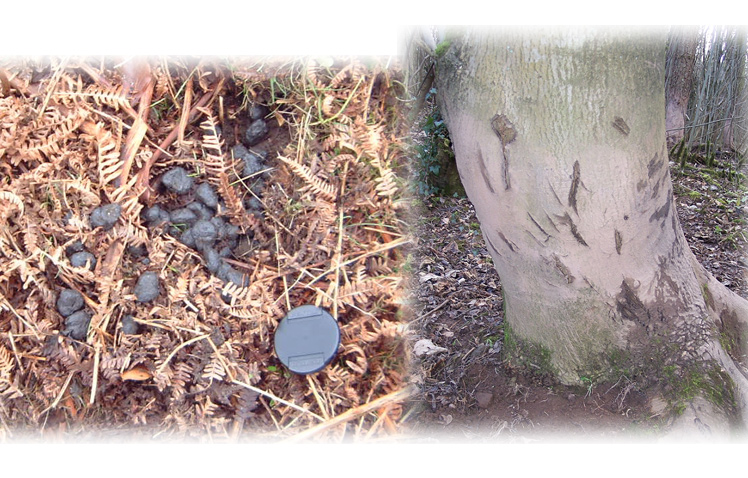
feral pig dung (left) and rubbing post and tusk marks (right)
Encountering feral pig
You may come across feral pig when working or during recreational activities. Feral pig are usually shy animals but may sometimes allow a close approach. There are very few documented cases of feral pig attacking people and a sensible attitude to encountering them should help to avoid any problems:
- If you see feral pig from a safe distance, do not approach them. It may be possible to simply wait until they have left the area of their own accord before proceeding. If not, try to leave the area by the same route you approached, or make a detour giving the animals a wide berth to avoid disturbing them.
- Avoid walking through dense undergrowth where feral pig may be encountered at close quarters.
- If you come across feral pig unexpectedly and very close, usually they will run away making a lot of noise. If they stand their ground, you should talk or shout, back off slowly then detour around the area.
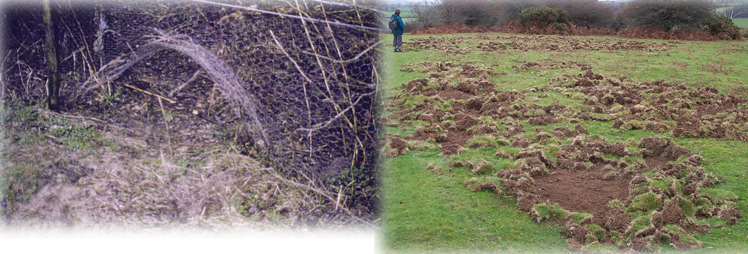
damage to rabbit fence (left) and rooting on pasture(right)
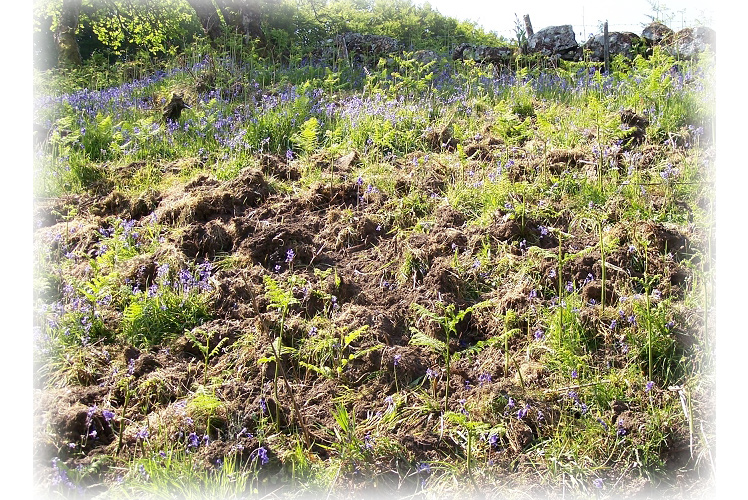
rooting among woodland bluebells
Dogs
Dogs may chase wild boar, causing them unnecessary disturbance. Adult pigs are quite capable of seriously injuring even large dogs.
- Keep dogs on a lead in areas where feral boar are known or suspected.
- If you see feral pig and you have a dog off the lead, call the dog to heel and put it on a lead.
- If you have a dog off the lead and it chases wild boar or will not return when called, stay at a safe distance and continue to call the dog back; do not approach the pig.
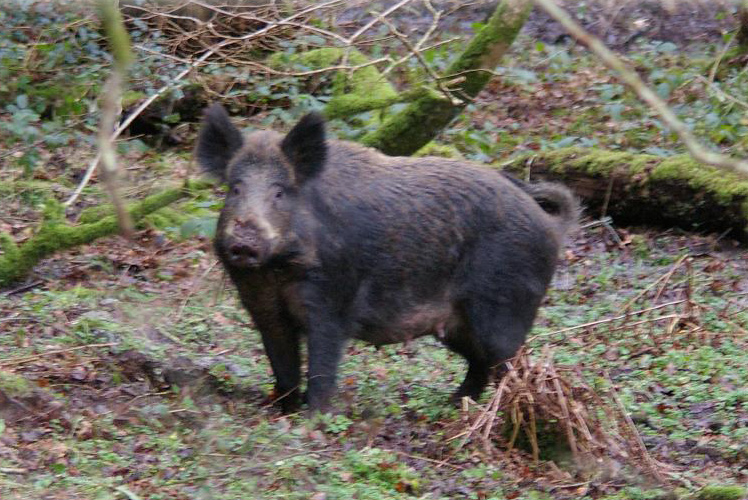
Alert sow
Breeding season
With good feed both sexes mature in under a year. Pigs are prolific and regular breeders, sows can come into heat between October and May but the height of the mating season is between November and January. Gestation is 3 months, 3 weeks, 3 days. Feral pig have a prolonged farrowing season. New litters may be born from February through to October, with a peak around April. Sows build a farrowing nest, a large construction of accumulated undergrowth, just before giving birth. Litter size is usually 4-6.
During periods when feral pigs are known or suspected to be having young:
- Avoid closely approaching feral pigs.
- Avoid areas of dense undergrowth or thick cover that sows favour as resting and breeding places.
- Avoid getting between a sow and her young.
- A disturbed sow may adopt a face on, rigid stance and snort, this is defensive threat behaviour and the best action is to back off.
Reporting
If you see a feral pig please report this by going to : http://www.nbnatlas.org
.
- ‡Ensure you are familiar with ...
